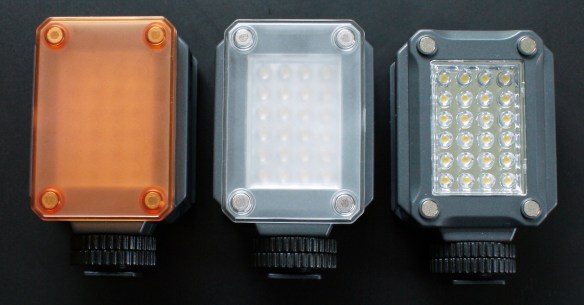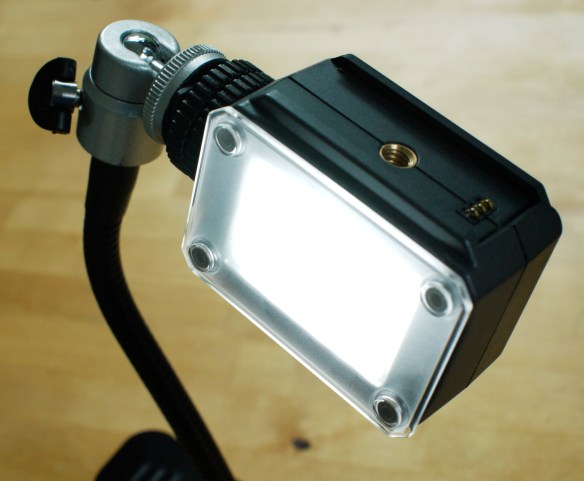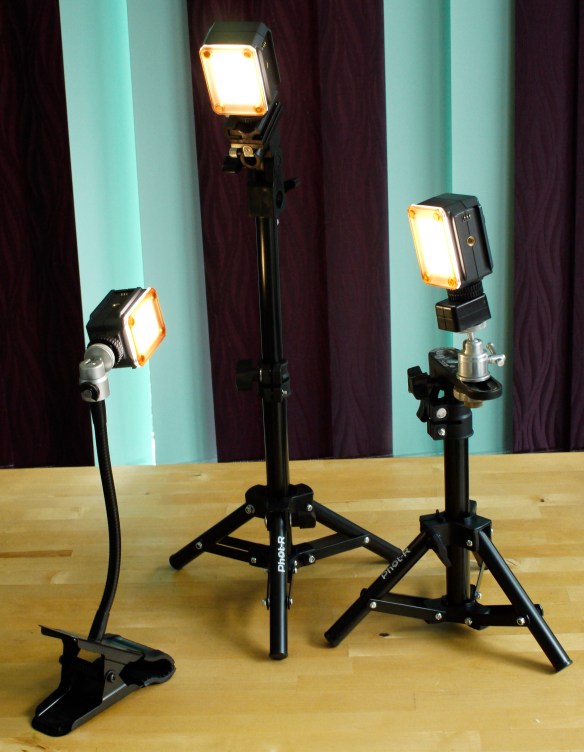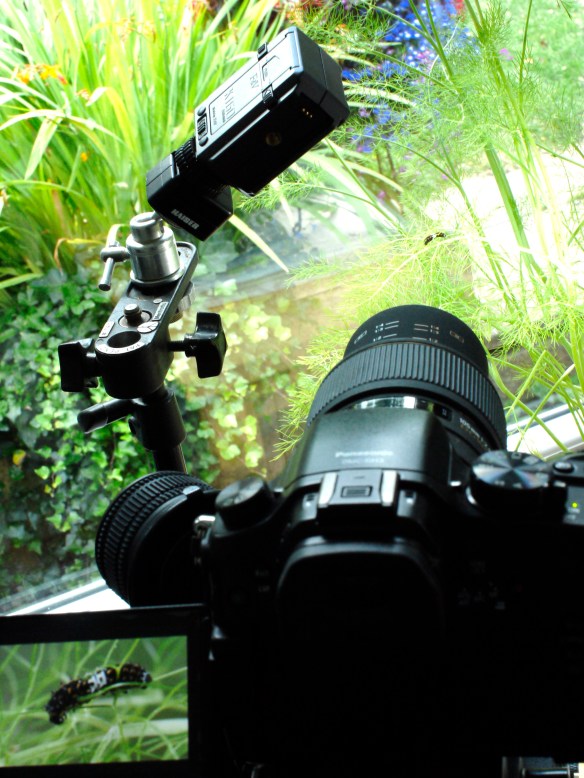I use my Panasonic Lumix GH3 camera mostly for wildlife and macro filming and on the occasions I need to record live sound in the field, a Rode VideoMic on the hotshoe ( with a Rode Deadcat from my NTG1 microphone to reduce wind noise ) is a good lightweight solution.
Last year I started using the GH3 to shoot web commercials but found I needed more audio control when recording interviews. Also, I needed 48 volt phantom XLR power for my NTG1. The Tascam DR-60D portable PCM recorder had been available for a few months and had good reviews so I decided to get one.
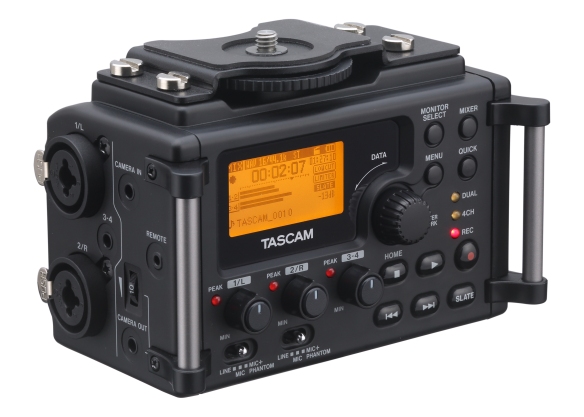
Tascam DR-60D
Many reviews had criticised the poor battery life of the Tascam ( the DR-60D uses 4 AA sized 1.5v alkaline or 1.2v NiMh cells ) and in the field I found I struggled to get 30 minutes recording time from alkaline batteries. I also had the additional problem ( not reported in any reviews ) of newly charged NiMh batteries causing the Tascam to crash a few seconds after being switched on. It took several switch-on attempts over a 10 or 15 minute period before the display would finally lock on.
The DR-60D can also be powered via a 5 volt mini USB port, and many owners have gone down this route, buying a portable Powerbank phone / tablet charger as the main power source.
It obviously adds additional bulk and weight to the Tascam but is worth it for the extended recording time. I looked at numerous Powerbanks, rejecting those that looked underpowered, flimsy or had an unwanted built in torch, and chose a Mi 10400 mAh model, with a tough aluminium housing and reliable LG or Samsung Li-ion cells. http://www.mi.com/en/mipowerbank10400/ . The Mi is also available in 5000 mAh and 16000 mAh versions. My 10400 mAh version cost £19.99 from a UK Ebay seller.
Be wary of fake versions though – yes, Chinese made fakes of a genuine Chinese product. This link shows how to tell the difference between a fake and the real thing http://www.techmesto.com/identify-fake-xiaomi-power-bank/ .
I’ve mounted the Mi to the Tascam using an aluminium block ( self drilled and 1/4″ threaded ) and a smartphone tripod support, both, like the Mi itself, bought on Ebay.
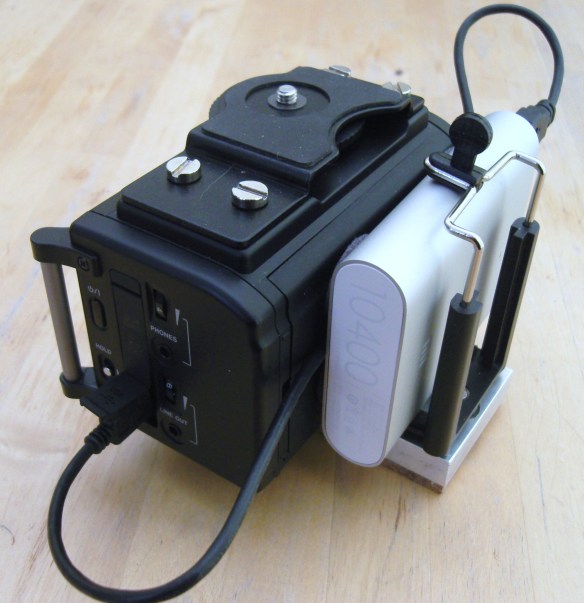
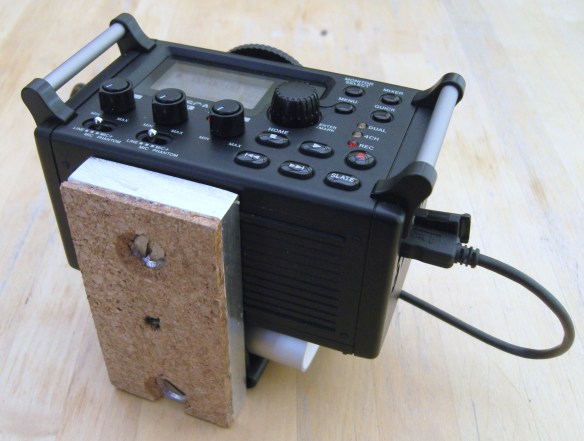
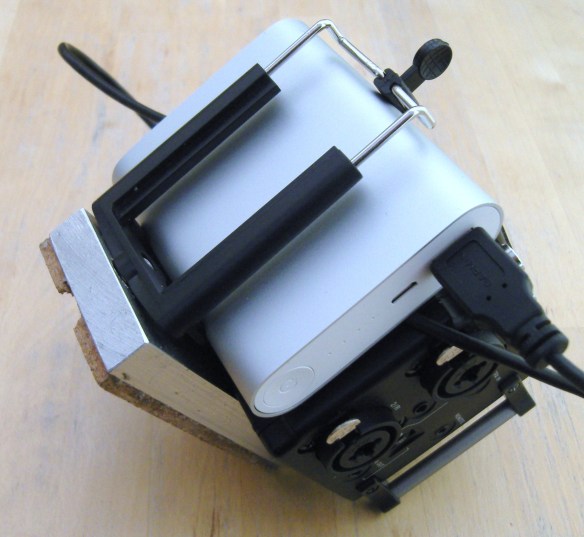
I haven’t done a conclusive battery life test but after recording with the Tascam, with 48volt phantom power switched on continuously for 6 hours, the Mi Powerbank was still showing 3 of its 4 power remaining lights.
The Mi is recharged via a micro USB port. A short USB to micro USB charging cable is supplied but it doesn’t come with a 5 volt USB charger. A 2 amp unit is recommended, which will charge the Mi in about 8 hours. For output to the Tascam you’ll need a USB to mini USB cable. Remaining charge can be tested by pressing the button on the side of Mi – the LEDs will flash for 10 seconds.
When plugged in to the Tascam, even when the DR-60D is switched off, the LED lights on the Mi will illuminate, giving a constant indication of the power level.
I don’t have any information as to whether the newer Tascam DR-60D mkii and DR-70D models have a better battery life but for the DR-60D I happily recommend the Mi Li-ion Powerbank.

